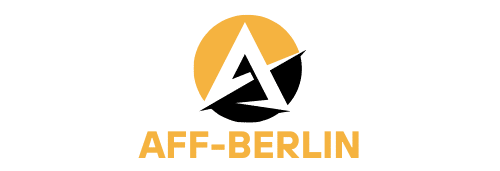Your portfolio is a showcase of your work and skills. As a freelancer, it’s a critical tool for attracting new clients and demonstrating your abilities in graphic and digital art. Creating a compelling portfolio requires careful selection and presentation of your best work, combined with a clear and appealing design.
1. Deciding What to Include
Before you start creating your portfolio, you need to decide what you will include. This is perhaps the most critical decision you will make in the process, as the quality and relevance of your portfolio can make or break a potential client’s impression of you.
En parallèle : The NIF in Portugal: why is it essential for foreigners?
Firstly, consider your audience and the kind of work you want to do. If you’re interested in logo design, for example, you should include a variety of logo designs in your portfolio. If you wish to work in illustration, include examples of your illustrations.
Whatever area of graphic or digital art you specialize in, make sure you include a diverse range of work. This demonstrates your versatility and your ability to adapt to different styles and briefs. However, while diversity is important, you should avoid including every piece of work you’ve ever done. Choose only your best work that shows off your skills and creativity to the fullest.
A lire aussi : How Can Mindfulness-Based Stress Reduction Benefit UK Healthcare Workers?
Also, remember that your portfolio should tell a story about your career and artistic journey. You can include pieces from early on in your career to show how your work has evolved over time.
2. Designing Your Portfolio
The design of your website or online portfolio is equally as important as the work you’re showcasing. It should be visually appealing and easy to navigate. A poorly designed website can be frustrating for potential clients and could overshadow your work.
Simplicity is key. Stick to a clean-cut, professional look that doesn’t distract from your work. Use a consistent colour scheme and typography throughout your portfolio. This will ensure that your portfolio looks cohesive and well-thought-out.
Make sure your site is user-friendly. It should be easy for potential clients to find the information they’re looking for. Include clear navigation links to your gallery, about me page, contact information, and any other relevant pages. You should also make sure your portfolio is responsive, meaning that it looks good and works well on all types of devices, including desktops, tablets, and smartphones.
3. Showcasing Your Work
Once you’ve chosen which pieces to include and designed your portfolio, it’s time to showcase your work. Start by organising your work in a logical way. This could be by project, by work type (e.g. logos, illustrations, website designs), or by client.
Each piece of work should include some context. This could be a brief description of the project, the client’s brief, your creative process, and the final result. Don’t forget to highlight any successful outcomes from the project, such as increased sales or positive feedback from the client.
Consider using multimedia to showcase your work. This could include images, videos, animations, or interactive elements. These can help to make your portfolio more engaging and show off your skills in different mediums.
4. Promoting Your Portfolio
Once you’ve created your portfolio, the final step is to promote it. This could be done through social media, networking events, online forums, or by sending it directly to potential clients or agencies.
Start by sharing your portfolio on your social media channels. This will give your network an opportunity to see your work and potentially share it with their networks. You can also join online forums or communities for graphic or digital artists and share your portfolio there.
Networking events, both online and offline, are another great way to get your portfolio in front of potential clients. These could be industry events, meetups, or conferences. Make sure you have a digital version of your portfolio that you can easily share with others.
Finally, don’t hesitate to reach out directly to potential clients or agencies. Send them a link to your portfolio along with a personalised message explaining why you think you’d be a good fit for their needs.
5. Continually Updating Your Portfolio
Your portfolio is not a static document; it should be constantly evolving as you gain more experience, learn new skills, and create new work. Regularly updating your portfolio ensures that it always reflects your current abilities and style.
Think of your portfolio as a professional diary that chronicles your career journey and growth in the field. By regularly adding new projects, you not only keep your portfolio fresh and relevant but also show potential clients that you are consistently producing quality work.
Importantly, updating your portfolio also gives you an opportunity to reassess your older work and decide whether it still aligns with your current skills and style. Maybe a project that once made you proud no longer reflects your best work. If that’s the case, don’t hesitate to replace it with something more recent.
While creating a compelling digital art portfolio may seem challenging, it’s a rewarding task that can set the stage for attracting new clients and opportunities. So put your best foot forward, showcase your creativity, and let your portfolio speak volumes about your skills and expertise.
6. Using the Right Tools for Portfolio Creation
Establishing a strong online presence is crucial for any freelancer, especially graphic designers. Your online portfolio reflects your personal style, creativity, and expertise in graphic design. Hence, it’s necessary to utilize efficient design software tools and the right website builder to create a visually appealing, professional portfolio website.
The choice of software tools is instrumental in creating high-quality digital art. Adobe Suite, which includes Photoshop and Illustrator, is a widely used platform by graphic designers. Tools like Sketch, Invision Studio, and Pixlr are also valuable for creating and editing design work. These tools can help you create a variety of works, from logo design, mock-ups, illustrations to UI designs.
Selecting a suitable website builder is about finding the balance between aesthetic appeal and functionality. Platforms like Behance, Adobe Portfolio, and Muck Rack are popular among artists for their user-friendly interface and customizable features. Some other options include Squarespace, Wix, or WordPress that offer drag-drop features, making it easy for you to arrange your work.
Learning to use these tools effectively can be achieved through short courses online or at local educational institutions. If you’re considering expanding your skills, you could even study abroad, where you can gain exposure to different styles and techniques.
7. Creating a Connection with Your Audience
Creating a compelling portfolio is not just about showcasing your best work, but also about connecting with your audience, including potential clients, art directors, and fellow graphic designers. Your portfolio should reveal who you are as an artist and what you can bring to a project.
One way to create a connection with your audience is through storytelling. This could involve sharing your inspiration behind a project, the challenges you faced, and how you overcame them. This not only makes your portfolio more engaging but also reveals your problem-solving skills, which is a crucial quality for a successful graphic designer.
Another way to connect with your audience is by sharing your artistic journey. This could include sharing about the short courses you’ve taken, projects you’ve worked on, and your experiences if you’ve chosen to study abroad. By doing so, you give your audience an insight into your professional growth.
Don’t forget to make your contact information easily accessible in your portfolio. You might also want to include links to your social media profiles, where potential clients can see more of your work and engage with your posts.
Conclusion
Creating a compelling digital art portfolio is an ongoing process that requires careful selection of your best work, thoughtful design, and regular updates. As a freelancer, your portfolio is your most powerful marketing tool, so it’s worth investing time and effort in making it the best it can be.
Remember to make use of the right software tools and website builders to create a portfolio that’s not just visually appealing but also user-friendly. Use your portfolio to tell your story, connect with your audience, and showcase your versatility and creativity.
By continuously improving and promoting your portfolio, you’re not just showcasing your skills as a graphic designer, but you’re also opening doors to new opportunities and potential clients. So get out there, share your work, and let the world see your creative prowess.











